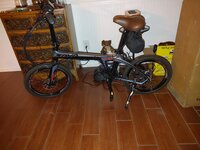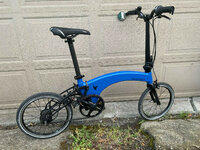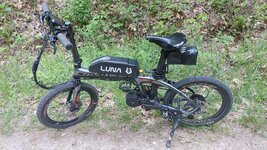Must be reading this wrong. Sounds like you're saying that ebikes with hub motors either lack useful gears or don't benefit from gearing the way mid-drives do.
My Class 2 ebike has a 500W hub motor with torque-sensing PAS, a 9-speed casette, and a single chainring. A common setup here in SoCal.
I've cycled a lot in my time. I use the gears on this ebike all the time -- just like I did pre-ebike, and just like I still do in my 6-speed manual sports car. Changing gears has exactly the same effect as pre-ebike.
Hard to imagine it's a lot different with a torque-sensing mid-drive. What am I missing?
Yes even though you have 9 speeds , almost all hub motors only allow a single gear ratio. The single largest advantage that mid-motors have over hub motors is their gear ratio. They allow the rider to power the rear wheel via the same chain and gear set as the pedals, which means that a low gear can be selected for powering up steep hills or accelerating from a stop with massive torque. There would be a difference on your bike if it were powered with a mid-drive and 9 gears.
The typical hub motor there is only one gear. Even if there are gears visible on the rear wheel, these visible gears solely affect the power provided by your pedaling – the power delivered via the chain. The rear hub motor itself does not benefit from these gears.
Think about it if you break a chain on your rear hub motor bike , you can still move right at or near to top full speed , you're still powered by the rear hub motor , but what gear are you in ??? The chain is gone so the gear is ONLY one gear ratio. You can't shift gears on a broken chain. Since the power comes from the REAR wheel. If you break a chain on a mid-drive you go nowhere since the entire mechanism is built upon powering the gears. You'd have to walk the bike home.
I think there is a misunderstanding of the mechanics of rear hub motors. Mid-drive motors don’t power the wheel directly like hub motors. Instead, the mid-drive motor provides power through the bike’s drivetrain. IE: THE GEARS
A mid-drive ebike motor can take advantage of the bike’s gears because it is integrated into the drivetrain. You can use the mechanical advantage of the gears to multiply the motor’s power.
For example, when you shift down it becomes easier for the mid-drive motor to turn the cranks. This allows you to easily power up steep hills. When you shift up, the motor has to work harder to turn the cranks. The mechanical advantage of the gears allows you to reach higher speeds. You can also use the gears to keep the motor in its ideal RPM range. Using the gears allows you to ride faster and more efficiently and ride varied terrain.
The hub motor directly powers the wheel it’s built into. In other words, it applies torque directly to the wheel. It operates completely separately from the bike’s drivetrain. A hub motor is not affected by gear changes. Hub motors can’t take advantage of the bike’s gears.
Now YOU can pedal the gears with rear hub motor assistance but the gears are only powered by your feet not the hub motor. A mid-drive motor ADS POWER TO THE GEARS.
This isn't a conspiracy against hub motors it's just how they work mechanically.
Basically think of a rear hub motor as being in 3rd gear always.


